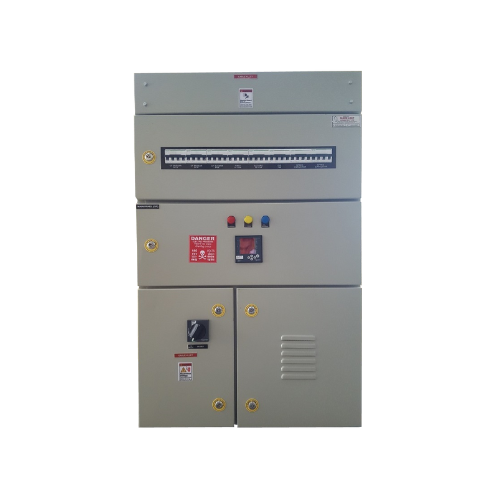Lighting plays a crucial role in both residential and commercial spaces, directly impacting energy consumption and operational costs. One of the key components that enhance energy efficiency and ensure seamless lighting control is the Lighting Distribution Panel (LDP). These panels not only distribute electricity efficiently but also help in optimizing energy use by reducing wastage, improving safety, and enabling smart energy management.
What Is a Lighting Distribution Panel?
A Lighting Distribution Panel is an electrical panel that manages and distributes power to various lighting circuits in a building. It serves as a centralized system where circuit breakers, switches, and controls are housed, ensuring a structured and safe way to distribute electricity to lighting fixtures.
Importance of Lighting Distribution Panels in Energy Optimization
1. Efficient Energy Distribution
Lighting Distribution Panels allow energy to be distributed evenly across different circuits, preventing overloading and reducing energy wastage. By segmenting lighting zones, these panels ensure that only the necessary lighting is used, thus minimizing unnecessary energy consumption.
2. Enhanced Control and Automation
Modern lighting panels integrate with automation systems, allowing users to program lighting schedules, dim lights when full brightness is not required, and use occupancy sensors to turn lights on or off based on presence detection. This leads to significant energy savings.
3. Load Balancing and Power Quality Improvement
LDPs help in balancing electrical loads across multiple circuits, which enhances power quality and prevents voltage fluctuations. Proper load management reduces wear and tear on electrical components, extending the lifespan of lighting systems.
4. Reduced Energy Costs
By optimizing lighting operation through timers, sensors, and programmable controls, Lighting Distribution Panels significantly reduce energy costs. Buildings with well-designed LDP systems experience lower electricity bills due to controlled energy consumption.
5. Increased Safety and Reliability
A well-maintained Lighting Distribution Panel ensures protection against short circuits, overloads, and electrical faults. This minimizes the risk of electrical fires, enhancing safety for occupants and property.
6. Integration with Renewable Energy Sources
With the growing emphasis on sustainability, LDPs can integrate with renewable energy sources such as solar power. This facilitates the efficient utilization of green energy for lighting, reducing dependence on conventional electricity grids and lowering carbon footprints.
Applications of Lighting Distribution Panels
Lighting Distribution Panels are widely used in various settings, including:
- Commercial Buildings: Offices, malls, and hospitals benefit from optimized lighting control for reduced operational costs.
- Industrial Facilities: Factories and warehouses use LDPs to manage high-power lighting efficiently.
- Residential Spaces: Smart home systems integrate LDPs for energy-efficient lighting control.
- Public Infrastructure: Street lighting and public buildings use LDPs to maintain safe and reliable illumination.
Conclusion
Lighting Distribution Panels are essential for optimizing energy use in lighting by improving efficiency, reducing waste, enhancing control, and ensuring safety. Whether in commercial, industrial, or residential settings, implementing an advanced LDP system is a smart investment for energy-conscious users looking to lower costs and enhance sustainability.
For businesses and homeowners looking to enhance their lighting efficiency, upgrading to a well-designed Lighting Distribution Panel is a step toward a more energy-efficient future.


